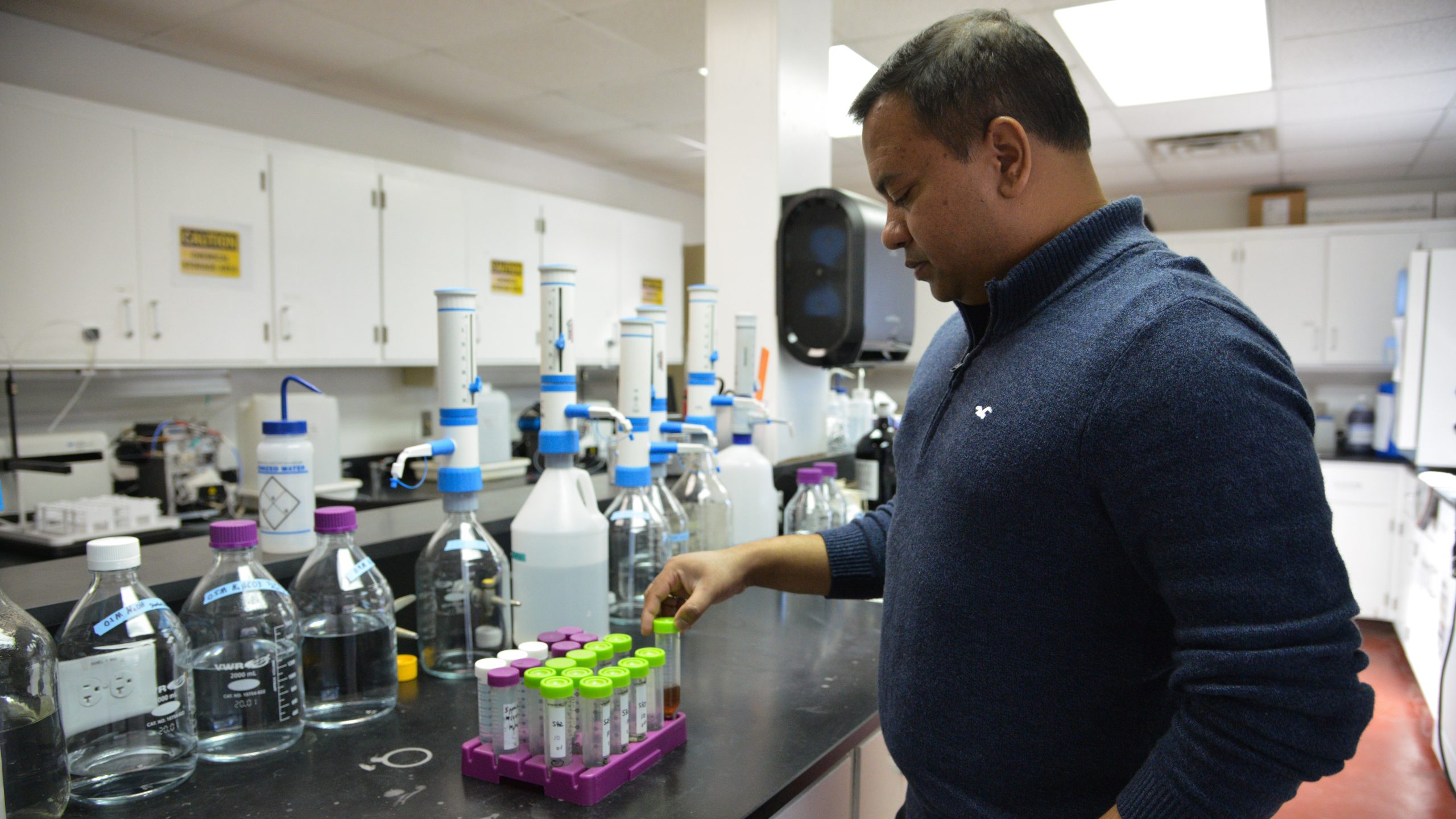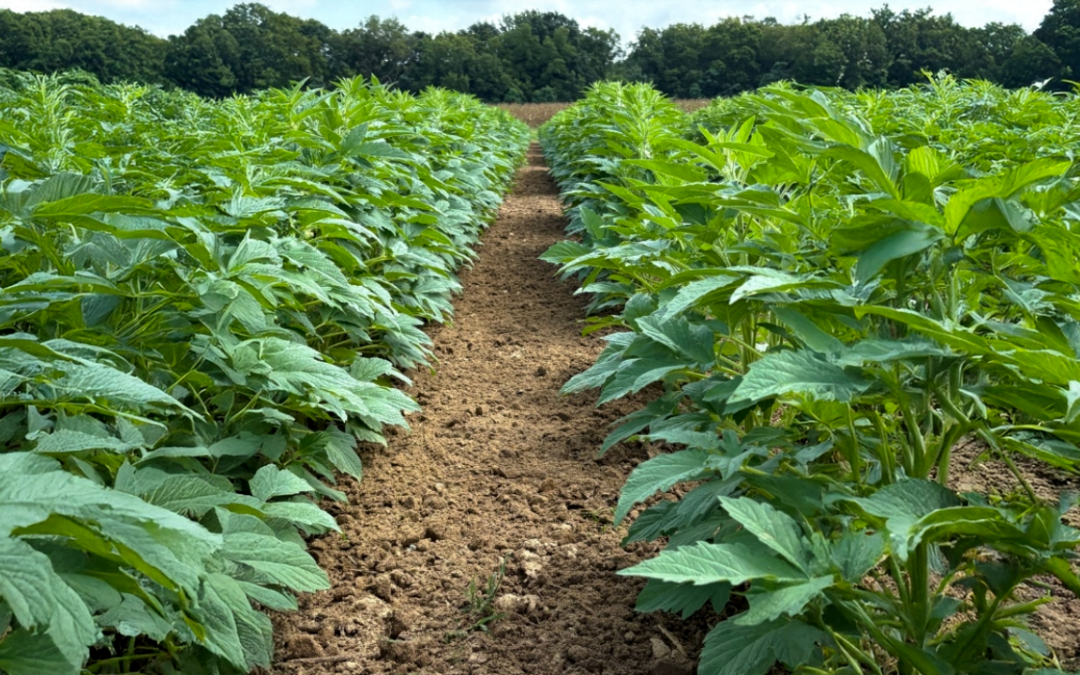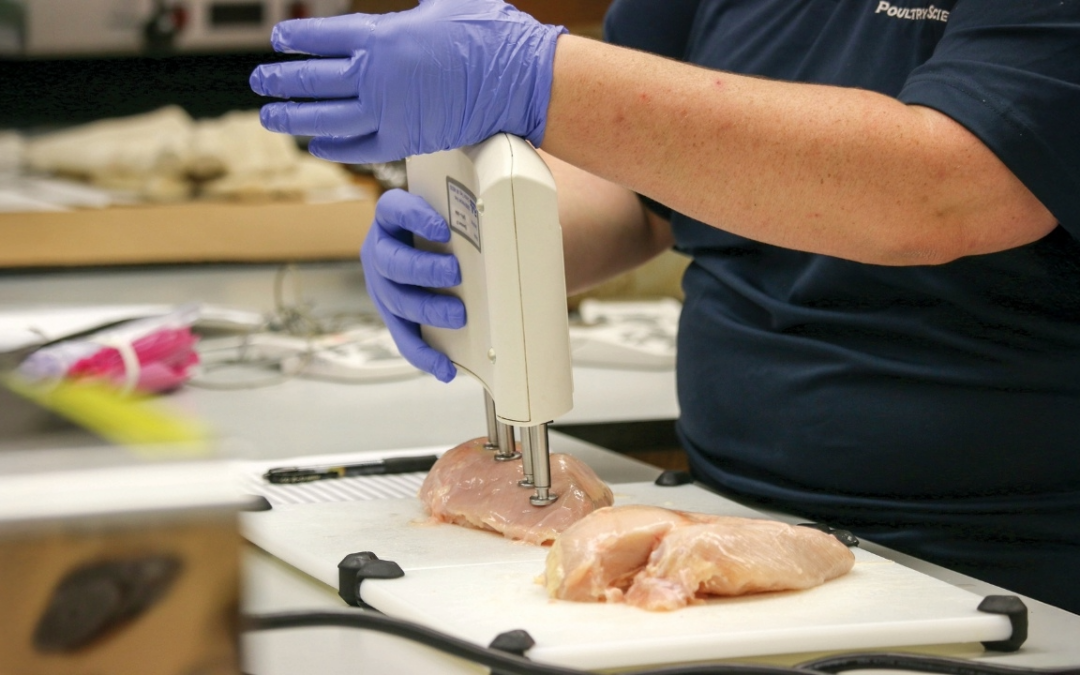In the quest to find a solution to one problem, agricultural research oftentimes finds answers to others along the way.
Such is the case with researchers from Auburn University’s College of Agriculture, where scientists are working to ensure that waste or litter from Alabama’s $15-billion-plus poultry doesn’t become a source of excessive phosphorus in surface waters.
This extensive research project has led to finding a more reliable soil test procedure for water-soluble phosphorus.
“Soil test P (STP) is the most commonly used tool worldwide to provide phosphorus fertilizer recommendations,” said Rishi Prasad, assistant professor in the Department of Crop, Soil, and Environmental Sciences. “However, STP also is used to evaluate the environmental risk of phosphorus loss from agricultural systems.”
The state’s poultry industry currently generates an estimated 1.5 million tons of litter, Prasad said, with most of it now being applied on row crop and pasture fields.
“The long-term application of poultry litter as well as phosphorus fertilizers in excess of crop requirements leads to a buildup of phosphorus in the soil,” he said. “The increase in the soil test phosphorous level increases the risk of phosphorus loss from soil to surface water, which can cause toxic algae blooms in surface water, leading to deficient oxygen levels and fish kills.”
There was an obvious need, Prasad said, to find a soil test procedure that could provide a better representation of the phosphorus loss risk from farmland.
“Our findings suggest that Mehlich-3 has a better and stronger correlation with water soluble phosphorus than Mehlich-1 and Lancaster, which are currently being used in Alabama,” he said. “Water soluble phosphorus in soil is used as an indicator of phosphorus loss risk from agricultural lands.”
This finding is detailed in a recent article published in the journal Agrosystems, Geosciences & Environment. Prasad’s co-authors include Anjan Bhatta, Debolina Chakraborty, Joey Shaw and Eve Brantley, also of the Department of Crop, Soil, and Environmental Sciences; Jasmeet Lamba of the Department of Biosystems Engineering; and Henry A. Torbert of the USDA-ARS National Soil Dynamics Lab in Auburn.
The majority of farmlands in Alabama fall under one of the five soil groups, Prasad said, including Appalachian Plateau, Coastal Plain, Limestone Valley, Piedmont Plateau and Blackland Prairie.
Mehlich-1 is used to test soil phosphorus levels in Appalachian Plateau, Coastal Plain, Limestone Valley and Piedmont Plateau soils, whereas Lancaster is used for Blackland Prairie soils in Alabama.
Using M-3 is not about economics but about using the right soil test to identify phosphorus loss risk, Prasad said.
“This finding is important for the state in so many ways,” he said. “The Mehlich-3 soil test will cost the same as the Lancaster test given the constitution of their extractants. We also have developed conversion equations that can be used to convert soil test results from Lancaster and Mehlich-1 to Mehlich-3.”
Using M-3, Prasad said, will make it easier to identify the soils that are at greater risk for phosphorus loss.
“Additionally, we are developing tools that can provide information on whether a soil is a source or sink of phosphorus,” he said. “These tools will provide better estimates of soil phosphorus levels. M-3 provides a better estimation of phosphorus levels for phosphorus loss risk assessment purposes.
Many U.S. states, such as Florida, Arkansas, North Carolina, Oklahoma, Louisiana and Kentucky are already using M-3 for both agronomic and environmental purposes.
“Mehlich-3 also can provide information on soil micronutrients that would be beneficial for agronomic proposes,” he said. “However, using M-3 for agronomic purposes in Alabama will require calibration studies for fertilizer recommendation purposes.
“If one soil test can provide both agronomic and environmental information on our diverse soils, then that will be a win-win situation for everyone, including producers, policy makers and environmental regulators.”





